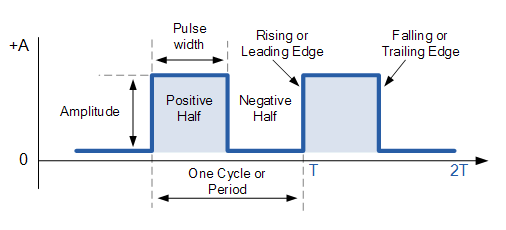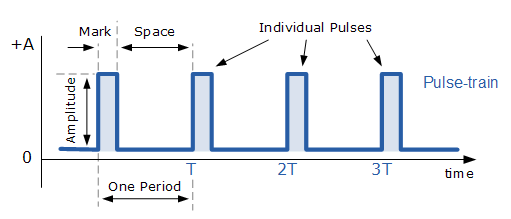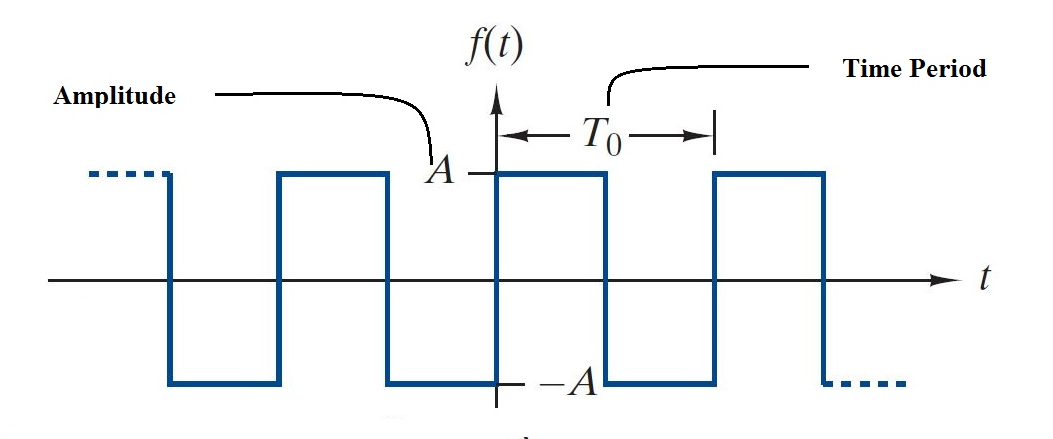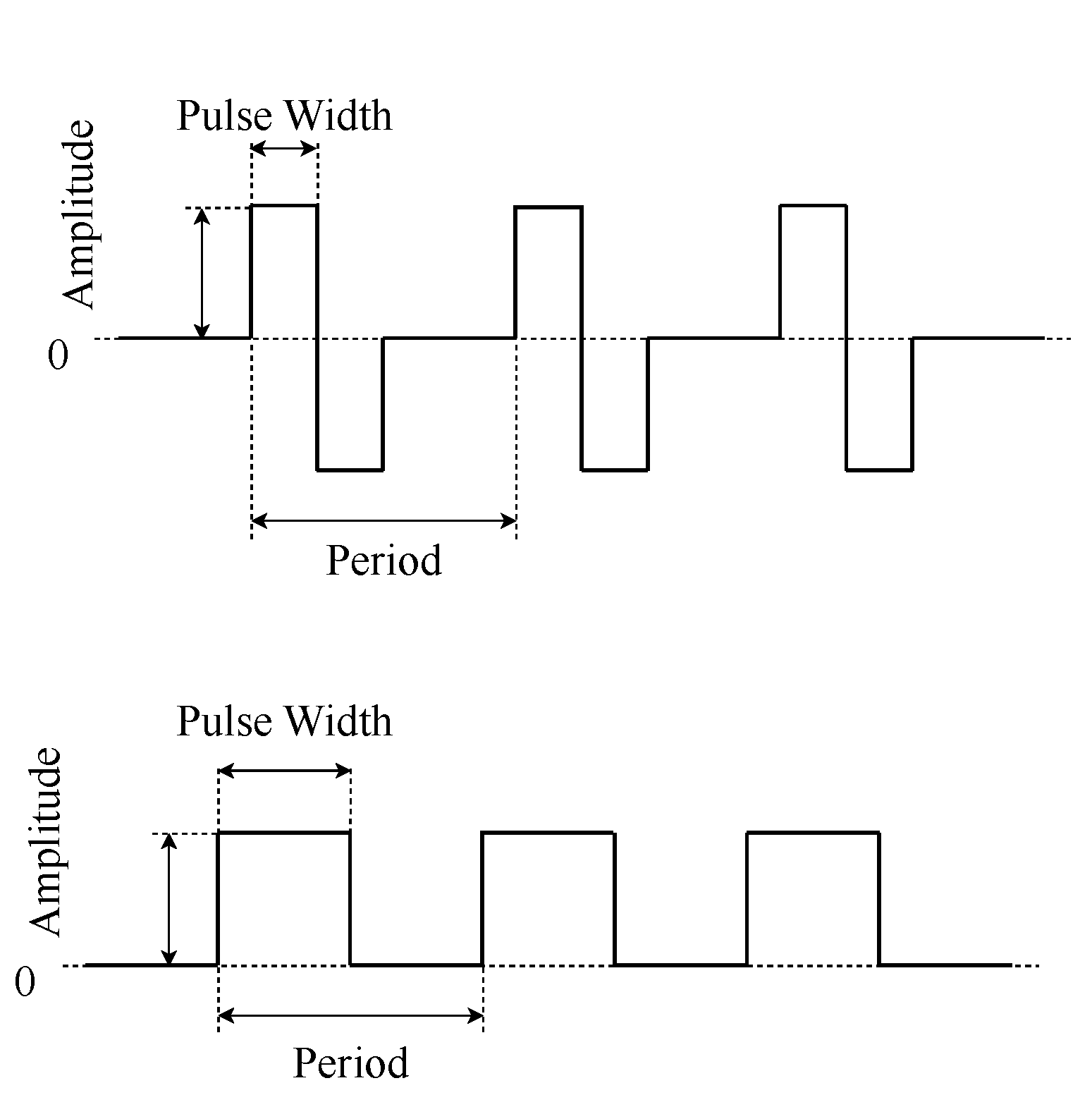Non-Sinusoidal Waveforms: Square, Rectangular and Pulsed Waveforms
In electronic engineering, generating and shaping electrical waveforms are important tasks used in many fields including communication systems and digital electronics. This article discuss three types of waveforms: square waves, rectangular waves and pulsed waves, each with unique characteristics and uses. Square waves symmetry and quick transitions between states are what make them so effective in switching applications. Rectangular waves flexibility is useful in tasks like pulse-width modulation (PWM) and signal processing, where fine-tuning the waveform is required. Pulsed waves are irregular and non-repeating, made for situations where timing changes are used to send information.This article explores the physical characteristics of these waveforms, how they behave in Fourier analysis, and their practical uses. Understanding these details helps highlight what sets each waveform apart in electronic applications. It also examines how each waveform is generated and the common uses for each, providing a clearer picture of how they contribute to improving electronic designs.
Catalog

Figure 1 : Square Waveform
Characteristics of Square Waves
Square waves are waveforms that switch quickly between two voltage levels called "high" and "low." These changes happen instantly, creating a sharp shift between the two states. However, in real systems, factors like circuit properties slow down the transitions. The time it takes for the voltage to rise or fall is called rise time (for going up) and fall time (for going down). A perfect square wave spends equal time in the high and low states, creating a balanced waveform.
The time spent in the high and low states can differ but the wave is still considered a square wave. Changing this balance can be useful for different tasks. However, when timing accuracy like in communication systems, it's important to keep the symmetry. In those cases, extra design adjustments might be required.
Characteristics of Rectangular Waves
Rectangular waves are similar to square waves but have uneven high and low phases, giving them more flexibility. While square waves have equal high and low times, rectangular waves let you adjust these times separately. This makes rectangular waves more useful for situations where the strict pattern of square waves isn't required.
One big benefit of rectangular waves is their flexibility. By adjusting the high and low times, the width of each pulse can be controlled that is important in pulse-width modulation (PWM). PWM is used in things like motor control, communication and power systems, where timing needs to be precise. Rectangular waves are also great in signal processing and timing. For example, in digital electronics, rectangular waves can be used as clock signals with adjustable timings to help coordinate different parts of a system. Rectangular waves are more flexible than square waves because their duty cycle can be adjusted.

Figure 2: Rectangular Waveform
Characteristics of Pulsed Waves
Pulsed waveforms are different from periodic waveforms because they don't have a regular, repeating pattern. Periodic waveforms repeat in a steady cycle but pulsed waveforms happen in reaction to something like reaching a certain voltage. Because of this, pulsed waveforms can look different depending on the situation.
One important thing about pulsed waveforms is that they can carry information by changing their shape and timing. Periodic waveforms are more predictable but pulsed waveforms can be adjusted in real-time to show different kinds of data. Since pulsed waveforms can change based on different conditions, they're a good tool for handling complex information. Their ability to adapt quickly makes them important for technologies that need fast responses and flexibility.

Figure 3: Pulse Waveform
Sound of a Square, Rectangular and Pulsed Waves
Square Waves: Square waves have a bold, sharp sound that stands out. They create this strong sound because they have lots of odd harmonics, giving them a buzzy tone. The wave quickly switches between high and low levels that makes its sound "edgy" and able to cut through other sounds in a mix. Square waves are used in electronic music and synths because they can make both deep bass and sharp, attention-grabbing leads.
Rectangular Waves: Rectangular waves are more flexible than square waves because you can change their tone by adjusting how long they stay in the "high" position. When the time spent high is about half, they sound like square waves with a bright and rich tone. But if the time in the high state gets shorter, the sound becomes thinner and more nasal. This flexibility lets rectangular waves create a wide range of sounds from strong and punchy to light and hollow.
Pulsed Waves: Pulsed waves have a quick, sharp sound, making them great for rhythmic or short, percussive effects. They're good at creating fast bursts of sound like clicks or beeps, and work well in music that needs strong, rhythmic elements. The fast rise and fall of pulsed waves gives them an aggressive feel, so they’re often used for synth stabs.
Fourier Analysis of Square, Rectangular and Pulsed Waves
Square Waves
A square wave is a waveform that rapidly switches between a high and low value, spending equal time at each level. By using Fourier series, we can express it as a sum of sine waves. For a square wave with amplitude A and period T, the Fourier series is:
![]()
Here, n represents only the odd integers, and ![]() is the frequency of the wave. The series starts with the frequency (when
is the frequency of the wave. The series starts with the frequency (when ![]() ) and includes higher odd harmonics. Each successive harmonic decreases in amplitude, following the inverse of the harmonic number.
) and includes higher odd harmonics. Each successive harmonic decreases in amplitude, following the inverse of the harmonic number.

Figure 4: Square Waves in Fourier Series
Rectangular Waves
Rectangular waves are similar to square waves, but the time spent in the high and low states is unequal. In this case, the Fourier series must account for the "duty cycle" D, which is the fraction of the period that the wave remains in the high state. The Fourier series for a rectangular wave is:
![]()
This formula adjusts for the different lengths of the high and low states, incorporating the duty cycle D into the sine wave components.

Figure 5: Rectangular Waves in Fourier Series
Pulsed Waves
Pulsed waves, or pulse trains, consist of repeated pulses separated by intervals where the signal is zero. The Fourier analysis of pulse trains is more intricate because it depends on the shape of the pulses and the timing between them. A common Fourier series for a train of rectangular pulses looks like:
![]()
In this expression, Δ is the width of each pulse, T is the period between pulses, ![]() is the base frequency of the pulse train. The
is the base frequency of the pulse train. The ![]() function, defined as
function, defined as ![]() , describes how the pulse shape affects the frequency components.
, describes how the pulse shape affects the frequency components.

Figure 6: Fourier Analysis of Pulse Trains
Electrical Waveforms Examples
Square Wave
A square wave is one of the simplest types of waveforms. It alternates between two levels, high and low spending an equal amount of time in each state. This equal division is called a 50% duty cycle.
Here's what that means:
• The wave stays "on" for a certain period of time (high level).
• It then stays "off" for an equal period of time (low level).
For example, if the pulse width is 10 milliseconds (ms) for both the "on" and "off" states, then the total time for one complete cycle (one period) is:
![]()
The frequency of the wave tells us how many cycles happen per second. To find the frequency, use the formula:
![]()
In this case:
![]()
So, the wave repeats 50 times per second.

Figure 7: 3-Phase Voltage Source Inverter with Square Wave Output
Rectangular Wave
Now, let's explore rectangular waveforms, that are similar to square waves but don't have equal on and off times. The time the signal stays high is called the positive pulse width, and the ratio of that time to the total period is called the duty cycle.
If the positive pulse width is 10 ms but the duty cycle is 25%, it means the wave is "on" for only 25% of the total cycle.
To find the total period, divide the positive pulse width by the duty cycle:
![]()
To find the frequency, use the same formula as before:
![]()
So, this waveform would repeat 25 times per second with the "on" time being shorter compared to the "off" time.
Comparison of Square Waves, Rectangular Waves, and Pulsed Waveforms
|
Characteristic |
Square Waves |
Rectangular Waves |
Pulsed Waveforms |
|
Shape |
Symmetrical, equal high and low times |
Asymmetrical, changing duty cycle |
Sharp, abrupt pulses of different width |
|
Amplitude |
Constant |
Constant |
Constant |
|
Frequency |
Fixed based on application |
Adjustable |
Lower than base frequency |
|
Pulse Width |
Half the period (at 50% duty cycle) |
Dependent on duty cycle |
Very short to moderate, defines pulse |
|
Repetition Rate |
Defined by frequency |
Defined by frequency |
Low to very high |
|
Duty Cycle |
50% (fixed) |
Any percentage, not 50% |
Varies widely, less than 50% |
|
Harmonic Content |
Rich in odd harmonics |
Rich in harmonics |
Dependent on pulse shape and width |
|
Generation Method |
Oscillators, flip-flops |
Adjustable oscillators, signal generators |
Pulse generators, specialized circuits |
|
Applications |
Timing circuits, digital clocks |
Switching power supplies, modulators |
Radar, communication, medical imaging |

Figure 8: Square and Rectangular Wave
Conclusion
This article explains the importance of different types of waveforms in the design of electronic systems. Each waveform has its own properties and benefits that are useful in specific situations. Square waves are useful to digital systems. They ensure smooth and accurate transitions between binary states that is good for data processing and communication. Rectangular waves expand on this concept by providing adjustable duty cycles, allowing for more precise control in applications where signal timing needs to be customized. Pulsed waves are invaluable in situations that demand high flexibility and responsiveness, such as radar or medical imaging. They convey information through changes in pulse shape and timing, making them ideal for transmitting data. Fourier analysis of these waveforms offers a clear, mathematical understanding of their behavior. This article gives a clear overview of both the theory and practical uses of these waveforms, making it a valuable guide for anyone working in electronic design.
Frequently Asked Questions [FAQ]
1. What are the advantages of square waves?
Square waves are valued because they are simple and useful in many electronics and signal processing tasks. One big benefit is their sharp switch between high and low levels, making them perfect for timing and digital clock signals in computers and other digital devices. These quick changes help avoid confusion in reading signals. Also, square waves only have odd harmonics that makes them easier to work with in applications involving harmonics, like synthesizers and audio technology, where clear sounds are important.
2. How are square waves made?
Square waves are generated using electronic oscillators, such as Schmitt triggers or flip-flop circuits, that toggle between two voltage levels. These oscillators switch outputs when their input crosses certain threshold values, creating the sharp transitions characteristic of square waves. Function generators that used in laboratories can also be programmed to produce square waves of desired frequency and amplitude by rapidly switching between high and low voltage states.
3. What is the rectangular pulse period?
The period of a rectangular pulse refers to the duration of one complete cycle of the pulse, encompassing one high state and one low state. This is quantified as the time it takes for the pulse to return to its initial state. The period T of the pulse is the sum of the duration of the high state (tthigh) and the low state (tlow), expressed as T=thigh+tlow. In practical terms, this period determines the frequency of the pulse waveform with frequency being the reciprocal of the period (f=1/T).
4. What are the components of pulse waveform?
A pulse waveform consists of several components:
Amplitude: The maximum value of the pulse above or below its baseline.
Duration: The length of time for the pulse is at its maximum amplitude.
Rise time: The time taken for the pulse to transition from its low value (often ground or zero voltage) to its high value.
Fall time: The time taken for the pulse to transition back from its high value to its low value.
Duty cycle: Represents the proportion of one period in which the signal is active or high. It is often expressed as a percentage.
5. How is pulse waveform measured?
Here’s the process:
Connect the oscilloscope probes to the signal source or the device outputting the pulse waveform.
Adjust the oscilloscope settings such as time/division and volts/division to appropriately scale the waveform on the display.
Trigger the oscilloscope to stabilize the waveform display, ensuring that the pulse is cleanly and steadily visualized.
Use the oscilloscope’s measurement tools to determine the pulse’s amplitude, period, duty cycle, rise time and fall time directly from the displayed waveform.